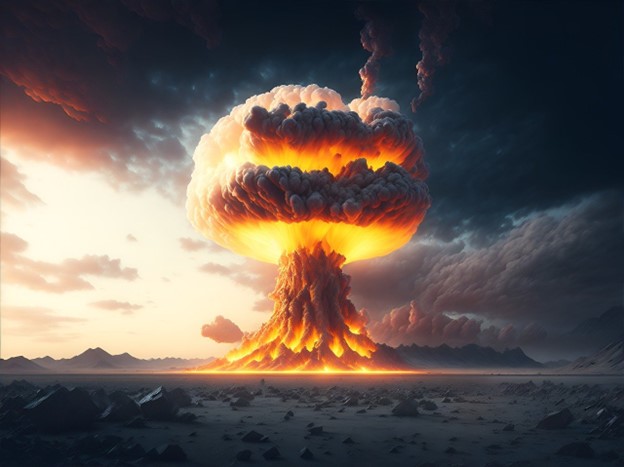Russia may be planning to resume nuclear weapons testing according to arms exports, despite Russia’s claiming they will not unless the United States conducts tests. The announcement that Russia is withdrawing from the Comprehensive Nuclear-Test-Ban Treaty (CTBT) comes as deputies in Russia’s legislative body, the State Duma, drafted a law following guidelines provided by Russian President Vladimir Putin in his October 5 speech to the Valdai Discussion Club. The Russian Publication, Kommersant, reported on October 18 that Putin has officially withdrawn his country’s ratification of the treaty. The United States had also signed, but Congress never ratified the treaty. “This is the latest in a series of moves that suggest Moscow may choose novel signaling rather than relying on the tenets of its traditional nuclear doctrine,” according to Alexander Taranov of the Jamestown Foundation. An explanatory note accompanying the new law points out the necessity of revoking ratification to eliminate the imbalance by restoring parity in nuclear arms control commitments between Russia and the United States.
The Treaty was ratified in May 2000 and intended to serve as the main international legal instrument to stop all nuclear tests. There are 44 states who possess or have the potential to develop nuclear weapons. Of those, eight states have not ratified the Treaty. A record number of Russian legislators, 439 of 450, in the State Duma signed the bill to withdraw in a show of unity in support of Putin’s agenda. Taranov says that Russian officials argue that the United States holds the most destructive position, pointing to the lack of Congressional support for ratification of the CTBT.
While Russia has officially withdrawn from the Treaty, officials in Moscow are quick to point out that the federal law on revoking ratification does not mean that the country has fully withdrawn from the Treaty. They say Russia will continue to participate in the Preparatory Commission of the CTBT Organization. Russia has pledged to continue participating in the exchange of data through the international monitoring system which verifies compliance. After the United States, Russia has the next highest number of monitoring stations. As of this fall there are 31 in Russia with an additional one scheduled to be constructed at the Yuzhno-Sakhalinsk Seismic Station AS92. Two weeks ago, Radio Sputnik broadcast that Russia does not have plans to resume nuclear testing. Over the summer as rumors spread through Moscow that Russia would be withdrawing from the Treaty, Dmitry Trenin, a Russian political scientist, announced that the CTBT withdrawal and the potential resumption of nuclear testing are important rungs on the ladder of escalation with Ukraine. He adds that this is part of the Kremlin’s strategy to force the United States to withhold support from Ukraine. Trenin, a Russian analyst, went so far as to allude to the possibility that Americans “could end up playing Russian roulette” if it continued aiding Ukraine. Last June RIA Novosti reported that the war environment is leading to a direct clash between NATO and Russia.
Less than a day after the Duma formalized the withdrawal the US Department of Energy (DOE) conducted a nuclear test in Nevada of a conventional explosive that Taranov says was designed to improve predictive algorithms and, according to DOE, “detection techniques for low-yield nuclear devices.” A senior fellow at the United Nations Institute for Disarmament, Pavel Podvig, argues that Moscow views the US action as an escalatory step. The Kremlin has condemned the test as a resumption of nuclear testing, even though it is considered a subcritical one.
Russian officials view the Nevada test as a first “demonstration” moving up the scale toward the tactical use of nuclear weapons. In a 1999 article, “On the Use of Nuclear Weapons to De-Escalate Hostilities,” the authors argue the “demonstration rung requires launching nuclear strikes on desert areas or secondary military installations with either a limited or zero military presence. The doctrine, sometimes referred to as a concept of “nuclear escalation for de-escalation,” may mean that Russia will conduct underground testing and later on above ground tests.
If this does occur, it is likely to encompass a three-step process. First, Russia would detonate an underground explosion, following by one above ground. Finally, Putin would use a live nuclear weapon. Russia has slowly advanced up the ladder of nuclear escalation. It suspended the New Strategic Arms Reduction Treaty, potentially stationed tactical nuclear weapons in Cold War era silos inside Belarus and mined the Zaporizhzhia Nuclear Power Plant. Taranov suggests that this may mean the world is facing the potential of Russia skipping rungs on the escalation ladder that have traditionally characterized Russian nuclear doctrine. Should the United States and NATO engage more heavily in the war in Ukraine, Putin may decide that regime survival is dependent on the threat of a nuclear strike and, with that decision, the world may witness a reinstitution of Russian nuclear tests.
Daria Novak served in the U.S. State Dept.
